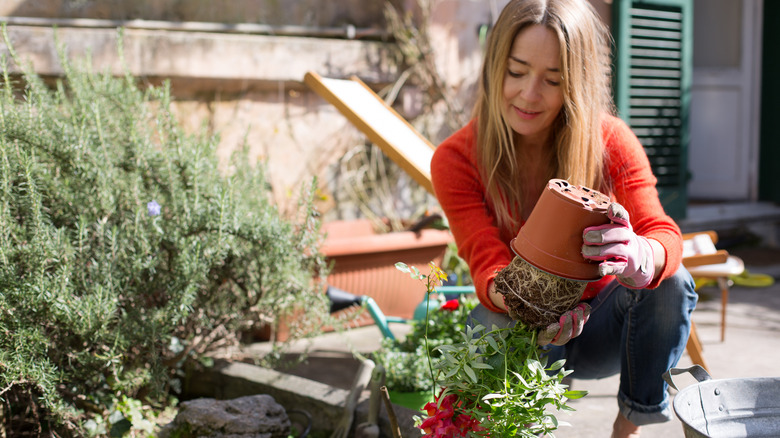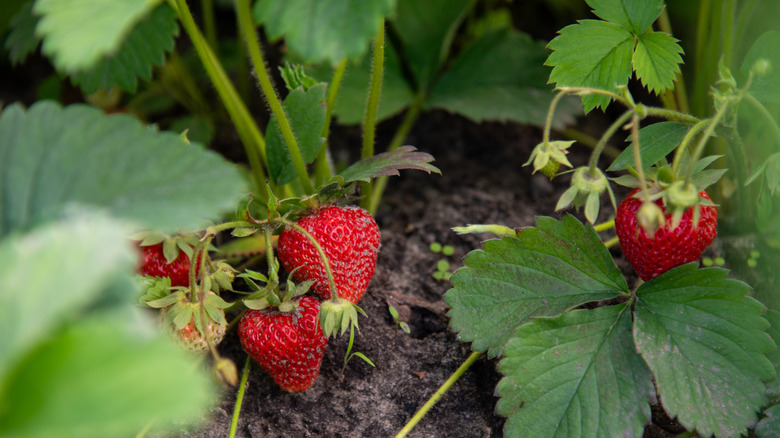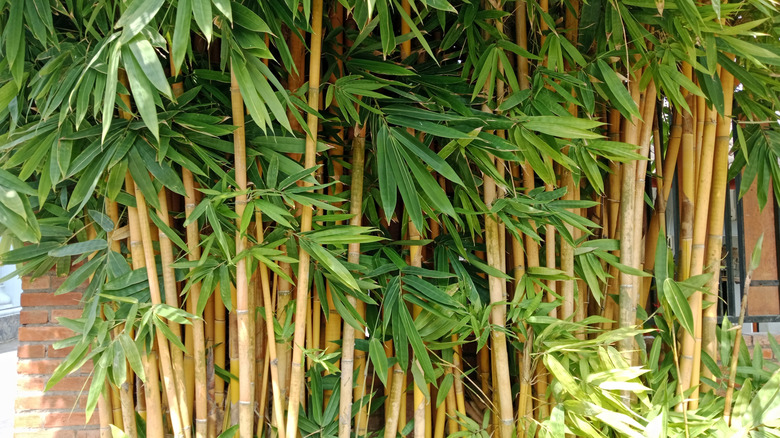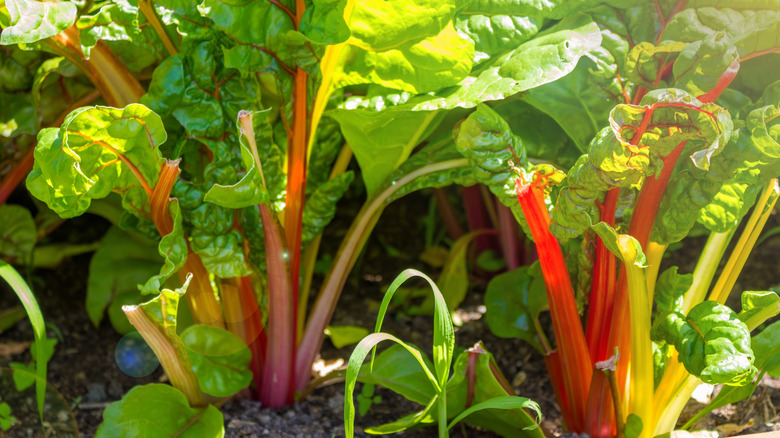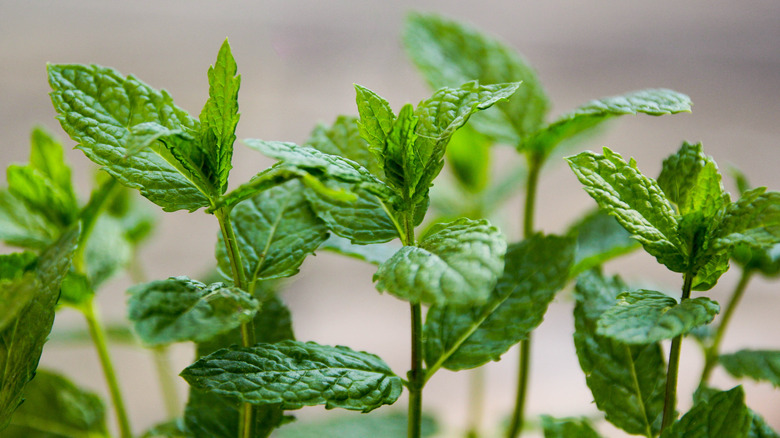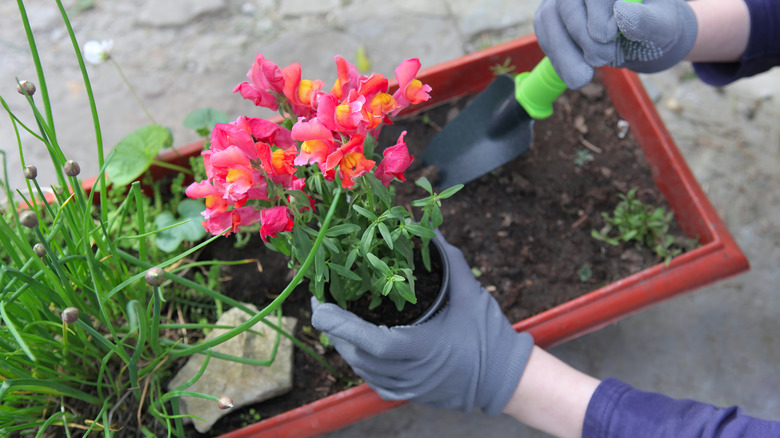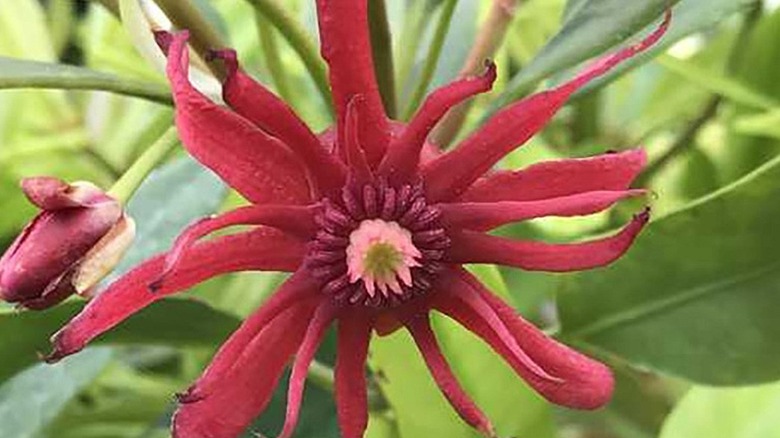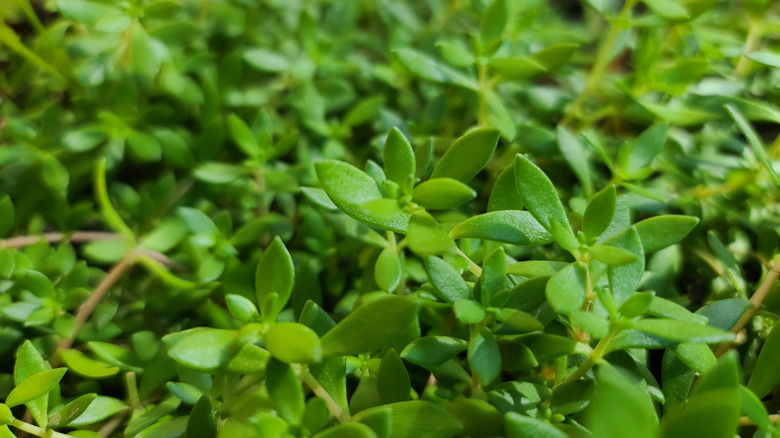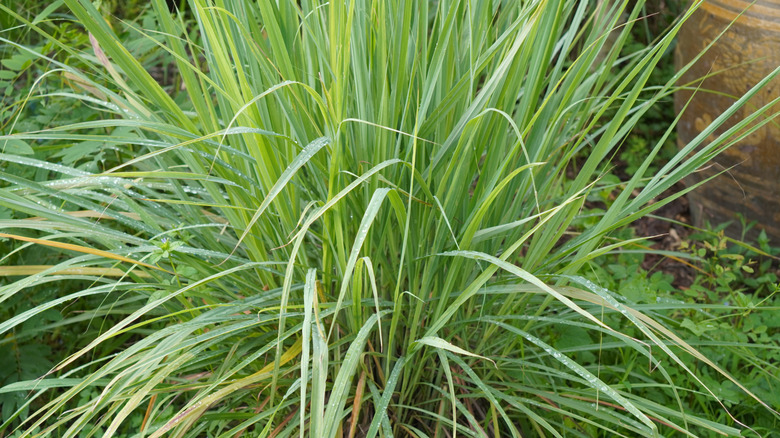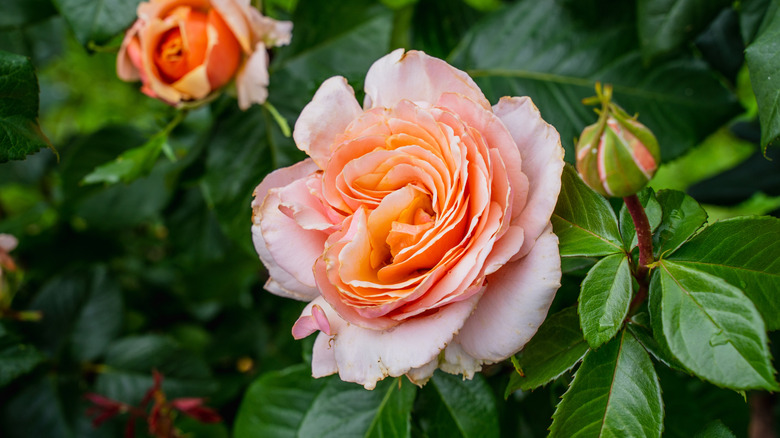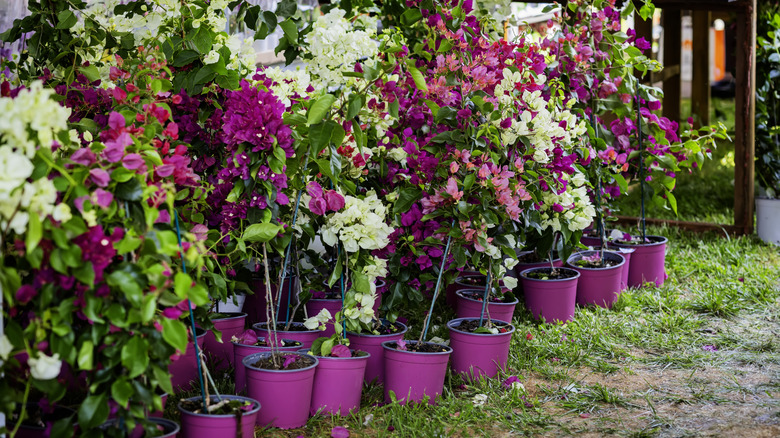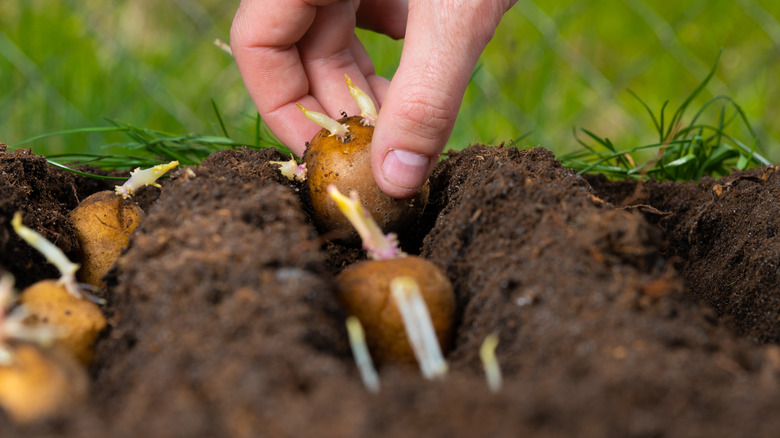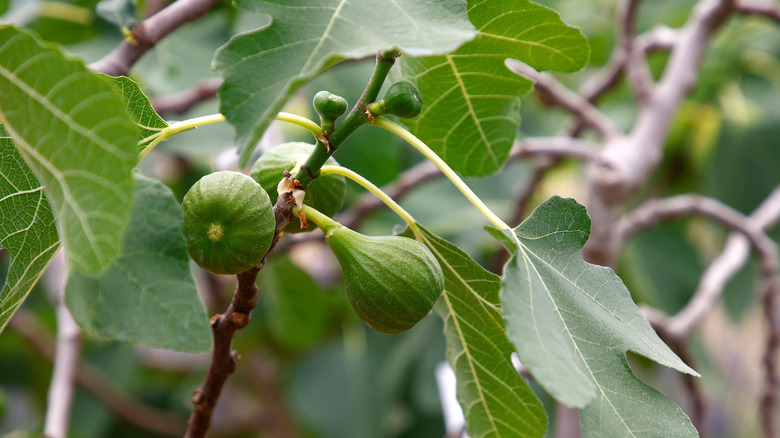12 Fast-Growing Plants You Shouldn't Grow From Seed (And What To Do Instead)
As impressive as it is that a tiny seed can become a whole plant, that's not the only way new plants are born. And for gardeners, it's not always necessarily the best way, either. In some cases, the benefits of starting seeds instead of buying plants don't outweigh the downsides, like a longer wait and less predictable results. Fast-growing plants such as roses, strawberries, and mint, are easier to start by buying young plants or using cuttings or runners.
One of the main obstacles to growing certain plants from seed is genetics. Hybrid plants, for example, produce seeds with different genes than the parent, so there's no way to know for sure what the offspring will look like. Some plants, especially some fruit trees, cross-pollinate with each other without human intervention. The seeds contain a combination of both parent plants' genes, with, again, unpredictable results. In nature, this is a useful thing: It creates more genetic diversity. But when you have to wait months or years for your gardening efforts to pay off, it's risky to roll the dice with mystery seeds.
Another obstacle is that seeds often require ultra-specific conditions — from temperature to moisture to light — to germinate. Some seeds are so picky that it's difficult to get them to germinate in a home environment. Or they may require special treatment, like being placed in the fridge to mimic natural stratification. Other seeds don't remain viable long enough or often enough to even make it to a gardening store. Luckily, for these fast-growing plants that are hard to grow from seed, there are still ways to get exactly the variety you hope for.
Strawberries
You haven't eaten a strawberry until you've munched one straight from the garden. But seed germination is sluggish and unreliable. Instead, to grow more strawberries, use strawberry runners — or bare horizontal stems — which produce clones of the parent plant. You can also buy starter strawberry plants. They grow easily in both garden beds and containers, and are cold-hardy in USDA zones 5 to 9.
The fastest-growing strawberries are ever-bearing strawberries, which will produce fruit within a few months. However, it's best to prevent them from fruiting in the first year so they can get established. Then they'll continue producing year after year.
Bamboo
Bamboo is a remarkably fast-growing plant — at times, it can grow multiple feet in one day! It's too vigorous for some settings, but seeds aren't its main method of spreading. Bamboo doesn't often produce seeds, and they don't remain viable for long. Gardeners instead can buy bamboo plants, grown from divisions or nursery cuttings, then learn how to grow and care for bamboo. Bamboo thrives in moist, well-draining soil and works well as a privacy screen, border, or accent. To prevent uncontrolled spread, you can construct a barrier, prune the roots, or grow bamboo in pots. Bamboo's cold-hardiness depends on the species.
Rhubarb
Often used in desserts, rhubarb takes a long time to grow from seed, with unreliable results. Division or crowns should be used instead. It's best to skip harvesting the first year as the plant gets established, but after that, you can harvest rhubarb in as little as four weeks by "forcing" it. This involves cutting it off from light (like in a dark shed), so the stems grow taller. This process shouldn't be done every year because it's stressful for the plant, but the results are delicious. Rhubarb will continue producing for up to a decade, after which it can be divided into new plants. It is cold-hardy in USDA zones 3 to 8.
Mint
Mint is better to grow in containers than in garden beds. Thanks to its growth rate of several inches per week, it can quickly take over the space when grown in-ground. Still, it's not so easy to grow from seed. The process is slow and unpredictable, and not worth the effort, especially considering that using cuttings is such a breeze. Just trim the stems, place them in water until roots appear, then transfer them to a small planter. You can start harvesting mint leaves in the first year. Mint is typically hardy in USDA zones 3 to 8.
Snapdragon
These fast-growing, beautiful flowers come in several different varieties and colors and can be grown in beds or containers. While it's common to grow snapdragon from seed, it's a tedious process because the seeds are so small. Instead, the easiest route is to buy young plants at a gardening store or nursery. Plant your snapdragons after the last frost with 6 to 12 inches of space between each plant. To get full, long-lasting blooms, add a potassium-rich fertilizer once a week and keep the soil moist. Snapdragons are short-lived perennials in zones 7 to 11 and grown as annuals elsewhere.
Star anise
Star anise is used as a spice in many cuisines. The star-shaped pods come from a shrub of the same name (Illicium verum). Some other related species are native to the southeast US, like yellow anise (Illicium parviflorum) and Florida anise (Illicum floridanum). These other anises are toxic and not safe to eat. Star anise takes a long time to mature from seed and isn't guaranteed to make it. However, it's a relatively fast-growing shrub, so buying plants makes much more sense. You can also propagate anise from cuttings. Star anise is hardy in USDA zones 6 to 10.
Sedum
Sedum, a genus of fast-growing succulents, come in both upright and low-growing ground cover varieties. Seeds don't produce consistent results; instead, you should buy plants and transplant them or take cuttings from a friend or neighbor. If transplanting, place each sedum 6 to 12 inches apart; low-growing varieties will sprawl and fill in the space. Sedum prefer full sun and can tolerate poor, sandy, shallow soil as long as it's well-draining. They're very low-maintenance plants: As long as you get rain every couple of weeks, you don't even have to water them. They're cold-hardy in USDA zones 3 to 11.
Lemongrass
Lemongrass has an unforgettable taste. It can be used as a substitute for ornamental grass in some areas or as a container plant, and it's easy to propagate by rooting the leaves (even those from the grocery store), then will continue to propagate on its own. By contrast, seeds take several weeks to germinate and require warm temperatures around 70 degrees Fahrenheit. When choosing lemongrass with propagation in mind, look for fresh and firm stems. Lemongrass is a tropical plant; it grows quickly with full sun and plenty of moisture, and needs to come indoors in the winter. It is only cold-hardy in USDA zones 10 and 11. Alternatively, you can grow it as an annual.
Roses
This classic flower is considered fast-growing for a perennial, reaching full size in as little as three years. The easiest way to start is to plant bare root roses — they're already a couple of years old, so you can enjoy blooms within just a few months. Growing roses from seed adds years to the process. Many attempts are unsuccessful or don't have the intended results, thanks to hybridization. To keep your roses healthy, offer full sun and rich, well-draining soil. There are rose varieties suitable for zones 4 to 11, but zones 5 to 8 are ideal.
Bougainvillea
Bougainvilleas are impressively colorful, with flowers ranging the full spectrum. Growing them from seed is tricky and takes a while; it requires a heated area such as a propagator, and you'll likely get small, white flowers. Using cuttings is possible but still difficult, whereas potted bougainvilleas are easy to find at gardening stores. They are quick growers, reaching up to 6 feet of growth in a single season, so they need lots of room. If your bougainvillea came in a small pot, move it into a larger container as soon as you can. Bougainvilleas require full sun, are drought-tolerant, and are hardy in USDA zones 9 to 11.
Potatoes
Potatoes are rarely grown from seed because they're finicky and unpredictable — the seeds aren't exact copies of the parent plant, and they need to be started indoors. The tried-and-true method is to use seed potatoes; look for those that are already sprouted to get a quicker harvest (within a couple of months in some cases). Simply cut each seed potato into pieces with one or two eyes each, and plant with the eyes facing down. The tubers should be ready when the vines have died back. Potatoes are versatile plants, but it's easiest to grow them in a raised bed. They're best suited to USDA zones 3 to 10.
Fig trees
As with many fruit trees, fig trees aren't usually grown from seed because it takes years to go from seed to fruit-producing tree and the results vary widely. Some may never bear fruit at all, because some types of fig trees require pollination by wasps that don't live in every part of the U.S. Instead, plant bare root trees, which can produce fruit in as little as a year. And they grow quickly once established, growing 6 to 15 feet in a single season. You can also get a reliable tree from a cutting if you don't mind waiting longer. Most fig trees are cold-hardy in zones 7 to 11, but cold-tolerant varieties exist too.
